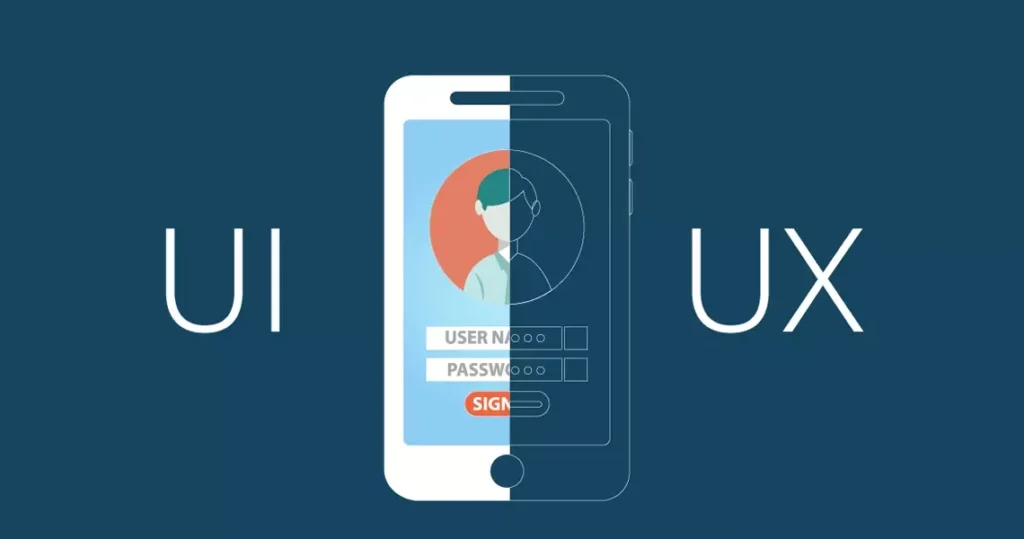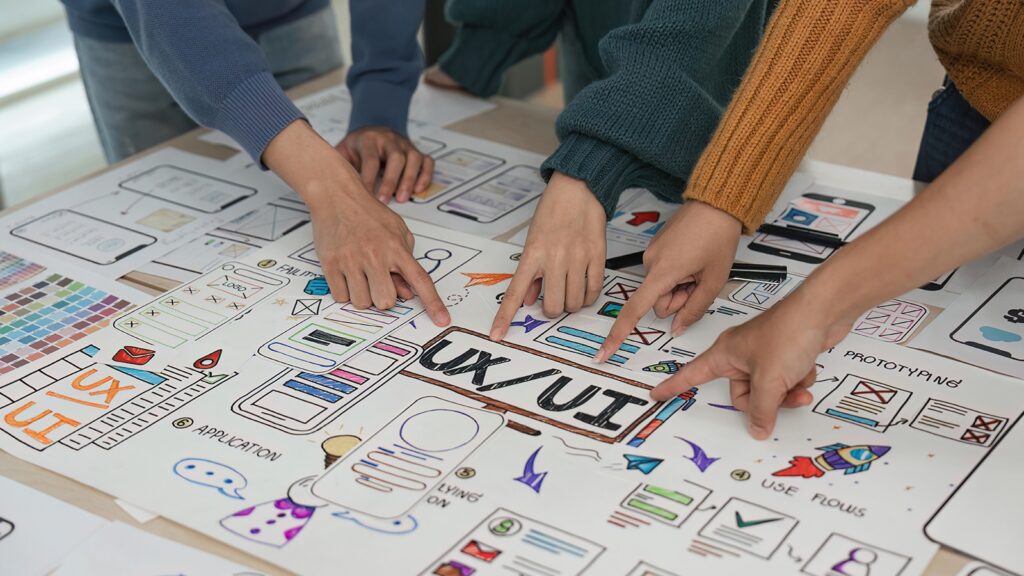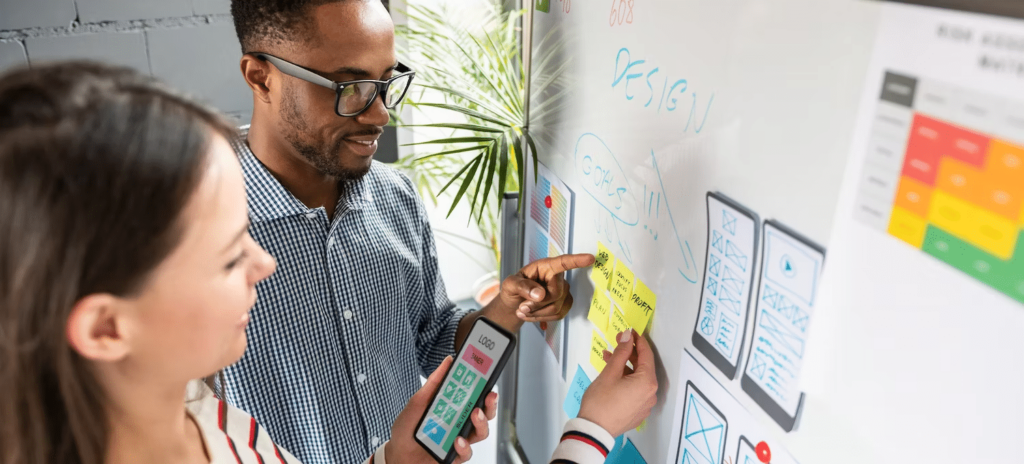
Understanding the crucial roles of UX&UI design in Digital Product
You want your website or app to look stunning and be easy to use, right? As a business owner, that’s crucial to your success. But did you know that user experience (UX) and user interface (UI) design are not the same thing? They’re often confused, but understanding the difference is key to creating an effective digital product. UX experience design focuses on the overall experience and interaction, while UI design determines the visual style.
UX designers aim to optimize how users interact with and experience your product. They conduct research to understand user needs and behavior. UI designers focus on the visual elements like colors, fonts, and layouts. For the best results, UX and UI designers work together to blend functionality and aesthetics. If you want to build a website or app your customers will love, invest in both UX and UI design. Your users will thank you, and your business will thrive.
Defining UX and UI Design
Web design focuses on the overall experience of using a product, including how easy or pleasing it is to navigate. UI design, on the other hand, concentrates on the actual interface and visual design elements like colors, fonts, and buttons.
While UX and UI design are different, they work hand in hand. Great UX design ensures a seamless user experience, but if the UI isn’t intuitive or appealing, the overall experience suffers. Likewise, a gorgeous UI won’t make up for a clunky UX.
Why UX and UI design matter
UX and UI design are crucial for any digital product. They:
- – Determine how easy your product is to use. If navigation is confusing or interfaces cluttered, people get frustrated and leave.
- – Affect conversions and sales. An enjoyable experience that makes features and benefits clear will convert more users and drive higher sales.
- – Build your brand. A polished UI with a slick UX communicates a high-quality brand and professional image. A poor experience signals the opposite.
- – Impact user retention and loyalty. When people have a good experience with your product, they stay longer, come back more often, and even tell their friends.
UX and UI designers work to understand users and craft tailored experiences for them. By designing interfaces and interactions that are intuitive, helpful and visually pleasing, they create digital products that win over audiences and achieve key business goals. Ultimately, UX and UI design can make or break the success of any website, mobile app or tech product.
The Role of UX Design in Improving User Experience
As a user, the experience you have with a product or service matters. That’s where UX design comes in. UX designers focus on how people interact with a product and work to improve the overall experience.
Website design is all about understanding user needs and crafting a solution that meets them. To do this, UX designers conduct research to gain insight into target users and their goals.
They may interview potential customers, observe them in their natural environment, or create personas and user stories to represent key groups.
Once they understand the user, UX designers determine how to remove friction and frustration from the experience. They figure out how to guide users in an intuitive way. Things like clear navigation, well-placed CTAs, and a minimalistic interface all contribute to a seamless UX.
UX design also involves testing and iterating. UX designers evaluate how real users interact with prototypes or live products and make changes to better serve them. It’s an ongoing process of refining and improving to create the best possible experience.
The role of UX design is crucial because it has a huge impact on how people perceive a product and brand. Good UX leads to higher customer satisfaction, increased engagement, and a better overall impression. Companies that invest in UX tend to build more successful digital products as a result.
In the end, UX design is all about crafting a solution that serves the user. It leads to experiences that just work and feel second nature. While it may seem simple on the surface, effective UX design requires empathy, insight, and a dedication to continuous improvement. UX designers help companies connect with customers in meaningful ways, and that is valuable indeed.
The Role of UI Design in Visual Interface Creation
UI design focuses on the visual elements of an interface like layout, typography, and color to optimize the user experience. As a UI designer, your role is to make interfaces visually appealing and easy to navigate.
Layout
The layout includes how interface elements like buttons, images, and text are arranged on the screen. An effective layout draws the user’s attention to important elements and guides them through the interface in a logical flow. Things to consider in your layout design include:
– Aligning elements in a balanced, visually appealing way
– Using whitespace and padding strategically
– Grouping related elements together
– Placing key elements, like call-to-action buttons, in areas of focus
Typography
The fonts, sizes, and styles you choose have a significant impact on the UI. Select fonts that match the overall style and tone of the interface. Headings should be large and eye-catching, while body text should be easy to read. Consider:
– Using different fonts for headings vs. body text
– Increasing font size for emphasis
– Using bold or italic for key terms
Color
Color is one of the most powerful tools in a UI designer’s toolkit. The colors you select set the tone for the entire interface and influence how users feel and interact with it. Some tips for choosing a color palette:
– Use complementary colors for contrast
– Limit the number of main colors to 2-3 for visual harmony
– Choose accessible color combinations that work for colorblind users
– Use brighter colors for interactive elements like buttons
– Consider cultural associations and meanings behind colors
By focusing on these three areas, you’ll design an intuitive user interface with a polished, professional look and feel. Keep testing and optimizing to improve the overall user experience. The results of your work will speak for themselves!
Why You Need Both UX and UI Design
To have an effective digital product, you need both user experience (UX) and user interface (UI) design. UX and UI designers work together to create a product that is both useful and esthetically pleasing.
UX Design Focuses on Function
Designers aim to improve the experience people have when using a product. Their goal is to ensure the product logically flows and is easy to navigate. UX designers conduct user research to understand users’ needs, motivations, and pain points. They then determine how to best address those needs through the product’s functionality and interactions.
Some of the responsibilities of a UX designer include:
– Conducting user research and testing
– Mapping user journeys and workflows
– Determining the product’s information architecture
– Prototyping designs and testing them with users
– Ensuring a seamless and frustration-free experience
UI Design Concentrates on Form
UI designers focus on a product’s appearance and visuals. They determine how the product should look to align with a brand’s style and capture users’ attention. UI designers must have a strong sense of visual composition, color theory, and typography to craft an appealing interface.
A UI designer’s role includes:
– Selecting fonts, colors, and branding elements
– Determining optimal layouts and placements of buttons and components
– Creating wireframes, mockups, and visual designs
– Ensuring visual consistency and ease of use
– Keeping up with trends in interaction design and technology
For a digital product to be truly successful, UX and UI designers must work in tandem. UX designers enhance functionality and UI designers improve esthetics, but a balance of the two leads to an unparalleled user experience. Understanding the difference between UX and UI design helps you better appreciate how important both roles are in crafting innovative, user-friendly products.
Finding the Right UX/UI Design Agency for Your Project
Finding the right UX/UI design agency to work with on your project is key to its success. You want a team that understands your business and target users, with the skills to craft an exceptional experience. Here are some tips to help you evaluate potential agency partners:
Experience and Portfolio
Look for an agency with proven experience designing solutions for your industry and business model. Study the case studies and live examples in their portfolio to get a feel for their visual style and approach to UX. Do their designs seem innovative yet intuitive? Optimized for user needs and business goals? An experienced agency will have a track record of successful redesigns and product launches.
Range of Expertise
While some agencies specialize in UX design or UI design alone, many offer expertise in both areas as well as related disciplines like branding, content strategy, and front-end development. Working with a multidisciplinary team ensures your product’s UX, visuals, and functionality are fully aligned. They can also provide more holistic guidance on your digital experience.
Process and Partnership
Look for an agency that wants to partner with you to fully understand your business, brand, and key challenges. They should have a structured design process that involves research, testing, and optimization to create the best solutions. Discuss how they communicate and collaborate with clients to make sure their working style matches your needs.
Pricing and Budget
Compare the rates and fee structures of different web design agencies to determine what will work with your budget. Some charge by the hour or project, others offer retainer partnerships. Make sure any potential agency partner is transparent about how they price their services. While a top agency is an investment, the impact of great design on your business can be invaluable.
Finding the perfect UX/UI design agencies may take some work, but it will be worth it to team up with an agency that feels like an extension of your own team. With the right partner, you’ll get the experience and expertise to create a stand-out digital experience for your customers. Focus your search on user experience design agencies with proven skills, a holistic approach, and a collaborative spirit.
Conclusion
There you have it—the key differences between UX and UI design explained. Understanding these distinctions can help you better appreciate the user experience of the digital products you use each day.
It may even inspire you to consider a career in one of these growing fields. At their core, UX and UI designers have the same goal: to create meaningful connections between people and technology. By designing with empathy, understanding users’ needs, and crafting engaging visuals, they work to enhance our lives through the interfaces we interact with every day.




























